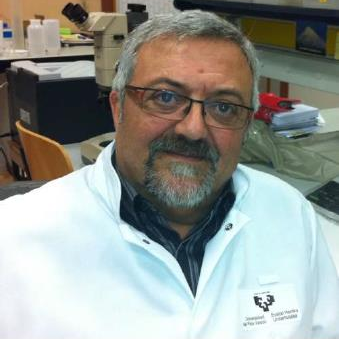Alternaria alternata: Should We Still Consider This Fungus as a Minor Brother in the Etiology of Respiratory Allergy?
A special issue of Journal of Fungi (ISSN 2309-608X). This special issue belongs to the section "Fungal Pathogenesis and Disease Control".
Deadline for manuscript submissions: closed (31 January 2022) | Viewed by 29196
Special Issue Editor
Interests: allergy and immunology of parasitic diseases
Special Issues, Collections and Topics in MDPI journals
Special Issue Information
Dear Colleagues,
Allergic diseases represent a major global health problem. The prevalence data of allergic diseases, the high cost of their management and their increasing incidence have sustained the growing interest in the study of this subject. Fungi are the third most common cause of type I allergic respiratory diseases, and sensitization to some species of fungi is considered a relevant risk factor for severity in asthma. Alternaria alternata is accepted as the most important fungal species causing sensitization, especially in the Mediterranean area. Although studies involving Alternaria alternata are numerous, many aspects—such as the identification of Alternaria species and other related genera, indoor and outdoor aerobiology and their implication in the development of allergy, the allergenic composition and the role of different allergens in the diagnosis, cross-reactivity and the treatment of IgE-mediated allergy caused by Alternaria alternata, the biological role of these allergens in the possible pathogenicity or defense phenomena—currently comprise a series of important issues that have not yet been fully solved.
Prof. Dr. Jorge Martínez Quesada
Guest Editor
Manuscript Submission Information
Manuscripts should be submitted online at www.mdpi.com by registering and logging in to this website. Once you are registered, click here to go to the submission form. Manuscripts can be submitted until the deadline. All submissions that pass pre-check are peer-reviewed. Accepted papers will be published continuously in the journal (as soon as accepted) and will be listed together on the special issue website. Research articles, review articles as well as short communications are invited. For planned papers, a title and short abstract (about 100 words) can be sent to the Editorial Office for announcement on this website.
Submitted manuscripts should not have been published previously, nor be under consideration for publication elsewhere (except conference proceedings papers). All manuscripts are thoroughly refereed through a single-blind peer-review process. A guide for authors and other relevant information for submission of manuscripts is available on the Instructions for Authors page. Journal of Fungi is an international peer-reviewed open access monthly journal published by MDPI.
Please visit the Instructions for Authors page before submitting a manuscript. The Article Processing Charge (APC) for publication in this open access journal is 2600 CHF (Swiss Francs). Submitted papers should be well formatted and use good English. Authors may use MDPI's English editing service prior to publication or during author revisions.
Keywords
- Alternaria alternata
- Alternaria allergens
- Alt a 1 Alternaria major allergen
- Alternaria spores
- Alternaria Aerobiology
- indoor Alternaria spores
- Alternaria immunotherapy
- Alternaria taxonomy
- Alternaria phylogeny






